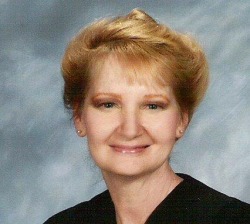As a young child I spent Sundays in Sunday School and worship in a dignified tall steeple Protestant church. The theological emphasis at the time was finding God in nature, and I learned to experience the Divine in the rocks and trees around me.
At the age of ten my family and I moved and became involved in a much smaller congregation where I was asked to teach the preschool class. I had recently been exposed to a smorgasbord restaurant for the first time and so thought of my teaching in those terms: I could offer my young students a series of activities much like a smorgasbord, those activities being ones that would enhance the point I was trying to get across. Many years later I would learn that this method had a name: the learning center approach.
When I became a teenager we moved again, and I was confirmed in the local Methodist church where there was a much greater emphasis on Jesus that I had heretofore experienced. I attended church camp and experienced a call to ordained ministry that moved my locus of passion from animals to all humankind. Returning to my local congregation, I found that universal love somewhat challenged by a visiting evangelist who informed our youth group that unless we accepted Christ as our personal savior that very night we were all going to hell. I bristled at his assumption that he knew my relationship with God whom I loved, and I refused to accept the idea that God needed me to say certain words in order to keep me out of hell.
As I continued through high school I found in my local church’s pastor someone who refused to accept the notion that God would call a female to ordained ministry. He insisted that I would have to work in Christian education, instead. Having Christian education framed in that way made it seem as something lesser, and I rejected it.
At Syracuse University I found a home in the Methodist Student Movement where the Protestant Chaplain, Vernon Bigler, affirmed me and my call in a way I had not experienced before. He helped me navigate access to denominational scholarships, thus enabling me to stay in school. I loved my theology courses, and wrote my senior thesis on the work of Paul Tillich whose common sense theology appealed to my down-to-earth sensibilities.
My decision to attend Garrett Evangelical Theological Seminary was an economic one: they extended more financial assistance to me and my new husband than any of the other schools to which I applied. I was one of only two women in the M.Div. Program and spent a lot of my time explaining why I was taking up space that really belonged to a man. I steadfastly avoided Christian education courses, so I would be seen as a serious ministerial student. This decision haunts me, as DJ Furnish was teaching there at that time.
While in seminary I supplemented my income by becoming a part-time youth minister at another tall steeple church where I loved designing curriculum and involving the youth in mind-expanding activities. When I took the youth group to the Chicago performance of the musical “Hair” and then led a discussion on its theological implications, one irate mother questioned my call, education, and lineage.
While some of the other seminary students chose to continue their studies following graduation, I was eager to begin serving as a minister. I was appointed to a church as soon as I graduated and after the probationary period, ordained. I loved preaching, teaching Bible study, and leading the Sunday School in developing an Open Classroom approach. In addition, I enjoyed writing curriculum materials for the United Methodist Publishing House
Ten years and three children later, I developed and opened a private progressive Christian school. Again, I was enamored with establishing priorities, creating curriculum, and teaching. I was not as excited about the responsibilities of administration. When a ministerial colleague asked me to come serve at his large urban church and create a mid-week education program, I closed the school and developed the highly successful “Steps in Faith” program that continues to this day.
In the late 1990’s while continuing to serve a church and raise my family, I began work toward a Ph.D. in education at Syracuse. I enjoyed my first taste of presenting papers at conferences and discovered APRRE and UMASCE. I loved the ideas of Mary Elizabeth Moore, Chuck Foster, Robert Browning, Dick Murray, and James Michael Lee, among many others. I was determined to wed practical theology and education and so wrote my dissertation on the cognitive levels exhibited by Sunday School teachers while they were teaching, a la Bloom.
Throughout my ministry I have been committed to the organized church but deeply concerned about communicating with those outside its reaches. In addition, I have wanted to translate theological theories into practical illustrations. In 2014 I published my first book, “A Different Kind of Joy,” whose intent was to educate people trying to find meaning in their lives. That book was followed in 2015 by “Help for the Trolley,” a children’s book ostensibly about a trolley but also a parable about the church. In 2016 I will publish a second children’s book, “Once There Was No Easter,” a progressive Christian blending of secular Easter practices and sacred meaning.
United Methodist clergy do not have to retire until the age of 72, so I am still serving a church and writing. It has not escaped my notice that I continue to be called back to my love of religious education, and I am eager to discover what shape that will take in the years ahead.

